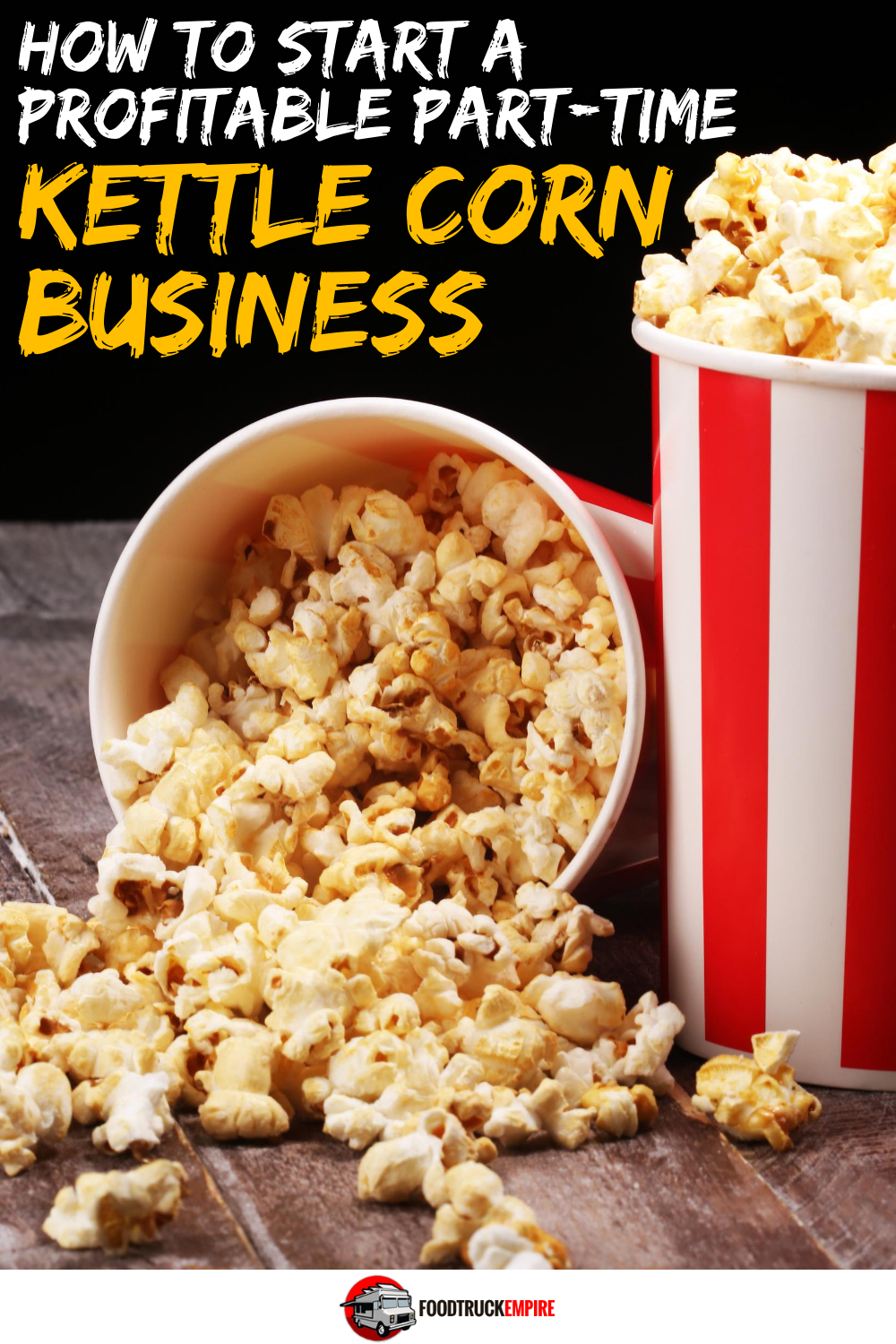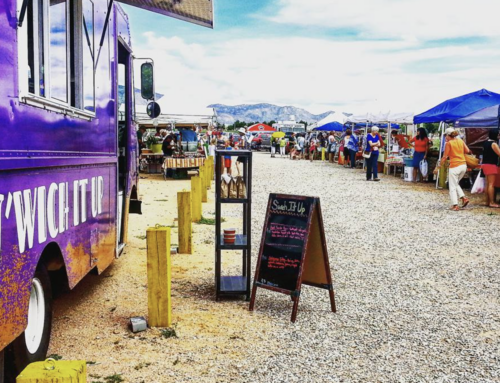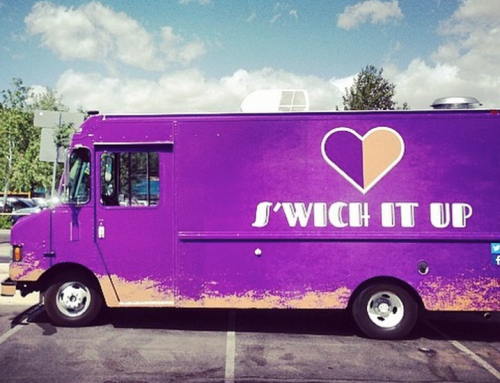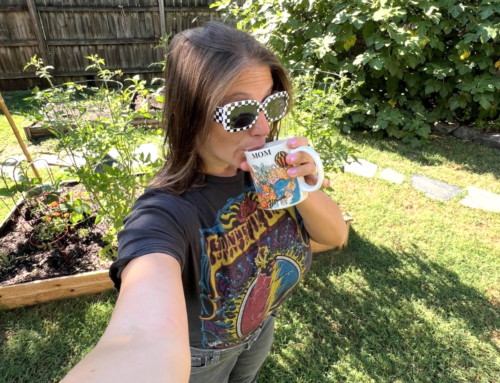Podcast: Play in new window | Download | Embed
Subscribe: RSS
Velma’s Wicked Delicious Kettle Corn has been popping at farmers’s markets and craft shows across throughout New England since 2006. Today, we speak with Eric Bickernicks, the owner of this kettle corn business to discuss how to start this type of business, what it’s like to be an operator, how much it will cost to start this type of business, and the equipment you’ll need to get up and running.
Eric first got the idea to start a kettle corn business while visiting a fair near his home. He couldn’t believe the length of the line that was being formed next to a little kettle corn stand. After doing some mental math in his head about how much revenue this tiny business was generating at $5.00 in revenue per bag, Eric was hooked and decided to start a old fashioned kettle corn business of his own with a buddy. The rest as they say is history and Eric has continued to operate this business for the past decade!
Pro Tip: If this is a business model you’re interested in diving deeper into, check out Eric’s website WickedDelicious.com. Eric has been documenting his journey operating a kettle corn business here for the past 10-years and provides summaries of many of the events that he’s vended at. It’s a great resource if you want to learn more about this topic!
The Early Days
After deciding to start the business, Eric and his partner decided they would take a chance and start vending at a local farmer’s market near their homes. The event charged a fee of roughly $50 to vend at so the risk was very low that they would lose money. At the end of the farmer’s market Velma’s Wicked Delicious Kettle Corn had generated about $200 in sales. Not an incredible amount of cash and not much more than “beer money” as Eric described it. But the concept had worked to generate revenue!
Slowly, the business continued to grow overtime though word-of-mouth and repeat customers at farmer’s markets. For some customers, it became a routine to pick up a bag of Velma’s Wicked Delicious each week just like they would eggs or milk. This repeat business led to higher overall sales numbers over time. Eventually, the business would more frequently make $800 all the way up to $1,000 in a single day.
Getting Customers to Buy Your Kettle Corn
When Eric opened Velma’s Wicked Delicious for the first time, no one knew about him or the quality of his kettle corn. So how did Eric convince folks to give his unique style of corn a try? The same way that thousands of new food businesses have used to raise awareness of their product. Free samples!
In the early days, Eric used free samples to give craft show goers a taste of their product. Enough people that tried the product, liked it and became a customer. This can be a great way to encourage people to try your product for the first time. The next time they see you, they might just skip the free sample and buy a bag to bring home.
Margins of Kettle Corn
How’s how much margin is built into a bag of kettle corn:
- $5.00 per bag gross profit.
- $1.50 – $1.60 cost of goods (cooked kettle corn + branded bag)
- This equals about $3.50 in net profit per bag sold after expenses.
There are some other variable costs that you will also need to consider, however. Some craft shows or fairs charge a small fee to be able to vend. It can cost anywhere between $25 – $300 depending on the type of event you plan to vend at. Make sure to build this into your expenses prior to attending an event. You should also factor in gas money for the travel required to attend each event.

Equipment List
Here is the basic equipment you’ll need to start a kettle corn business:
- Kettle Corn Popper – The kettle corn machine is what you need to operate your business. Make sure you invest in something that is durable and allows you to produce a consistently high-quality product every time you vend.
- Sifting Bin – The bin is where your kettle corn will be stored temporarily before it is packaged.
- Stirrer – This is used to stir the kernels and make sure the product gets popped. It’s also good for entertainment purposes because customers can see watch you making their kettle corn.
- Counter – A counter is helpful for serving customers. It also provides a nice way to hide product.
- 3-Compartment Sink – This is needed in most areas to adhere to health regulations. Additionally it will allow you to wash your hands.
- Propane Tanks – This is to provide power the popper.
- Tent and Signage – The tent serves two purposes. One is to protect you as the vendor and product from the elements of wind, rain, and sunshine. The tent and banners that make up your pop-up also help to sell and draw attention to your stand.
As an aside, one of the suppliers that Eric mentioned during our interview is North Bend Kettle Corn Equipment. This is the brand of equipment of Eric uses for his business. Another business recommended by Eric is Mann Made Poppin’ Machines.
Ingredient List
Here’s a simple list of ingredients you’ll need to make a batch of classic kettle corn:
- Popcorn Kernels: 1/2 cup; these are the stars of the show.
- Granulated Sugar: 1/4 cup; for that sweet touch.
- Vegetable Oil: 1/4 cup; canola or another high-smoke-point oil works too.
- Salt: 1 teaspoon (or to taste); it’s not kettle corn without the sweet-salty balance!
And there you have it! With just these four ingredients, you’re on your way to making profitable part-time or full-time food business. Best of all, you can sources these ingredients from retailers like Costco or Sam’s Club.
Of course you may want to take a little extra time to source a unique popcorn kernel for your business. For big, fluffy kettle corn, most kettle corn vendors go with “mushroom” popcorn kernels. Here’s why.
These kernels pop into large, round shapes that resemble a mushroom’s cap. The shape is sturdy and provides more surface area, which is excellent for kettle corn. The sugar coating adheres better to the round, robust shape, ensuring you get that sweet crunch in every bite. Plus, their substantial size offers a satisfying mouthfeel, and they’re less likely to break into small pieces when being stirred in the kettle with the hot sugar.
While “butterfly” kernels are more common for regular popcorn due to their irregular shape and light texture. This is what you’ll typically find at the grocery store. The mushroom kernels are the go-to for most sweet popcorn recipes, including kettle corn, caramel corn, and other candied popcorn, primarily because of their structure and resilience to coatings
Estimated Startup Cost to Get Started
According to Eric, your biggest expense is going to be purchasing a kettle corn popper machine and a tent / pop-up. The costs of this equipment is variable, but a professional grade kettle will run you between $3,000 – $5,000 on average.
Eric advises not going too cheap on this investment since you’ll want a machine that will operate efficiently for many years into the future and cook a consistent product for your customers. Bottom line, if you find a popper on Amazon.com for $199 that’s probably not what you want to build your business around.
How to Find Kettle Corn Vending Locations
Craft fairs / Antique Festivals / Car Shows / Farmer’s Markets / Fire Works Shows – If you’re just starting out these are great opportunities to begin. Typically the event fees are low here and you’ll be able to vend for $50 or less.
Eric recommends starting small at events like these for a few reasons. For one, small events are low risk to you as a business owner. With a low entry fee it won’t take long for you to cover the cost of vending. Your overhead can be even lower since you’ll likely be able to operate the stand on your own so no need to compensate an employee.
Larger Fairs / Festivals – County fairs and large music festivals are the types of events that can generate a big pay day. Unfortunately, vending at big events like these come at a price. Many of the biggest event charge hefty fees for the opportunity to vend. The price tag varies but could easily be $200 – $1000 for a multi-day event. This literally eats into your profits.
The other thing is that you’ll need extra help if you plan to vend here. You may need to employ 1 – 2 employees to take advantage of the demand at these events. If you need to pay two employees at even $10 per hour each that’s more out of your net profits. Depending on the event, hiring some part-time employees could totally be worth it. But it’s a factor to consider before moving forward.
Related Reading: 201+ Best Performing Popcorn Marketing Slogans and Taglines
Charity events – The different between serving at charitable events versus a car show is that you will usually need to share a certain percentage of your sales with the charity. These events can be personally fulfilling as well as economically for a kettle corn business.
There is one type of charitable event that Eric warns against, however. Churches will often do small fundraisers that attract 100 people or less. While it can be wonderful to help support every charity, you may not be able to afford to attend every event like this that you’ve been asked to participate in if you want to generate a decent income.
Corporate events – These are the holy grail of the kettle corn business. Unlike other vending opportunities, you’re usually paid in advance with corporate events. This doesn’t just include vending at parties for businesses either. One of Eric’s favorite places to vend is at colleges and universities.
Typically universities will buy a certain number of bags from you in advance. All you need to do from there is to show up and distribute your bags of kettle corn to the hungry crowd of kids. If the event isn’t well attended or there’s rain, it’s none of your concern. You have fulfilled your end of the bargain by attending the event and providing your product / service.
What Permits Do You Need?
Starting a kettle corn business is an exciting venture, but it requires several permits and licenses to ensure you’re operating legally. These requirements can vary widely depending on your location (country, state, city), the scale of your business, and whether you’re operating from a fixed location, a food trailer, or setting up at different events. Here’s a general list of permits and licenses you might need:
- Business License: This is the standard requirement for any new business. It registers your business with the local, state, or national government.
- Food Vendor’s License: Since you’re dealing with food, you’ll need a license indicating you meet all health standards for preparing and selling food to the public.
- Health Department Permit: You may need to have your kettle corn stand or food truck inspected by the health department to ensure you’re complying with local health and safety regulations.
- Fire Department Permit: If you’re cooking on-site, especially since you’re dealing with high temperatures and open flames, you’ll likely need a permit from your local fire department.
- Temporary Food Facility Permit: If you plan to set up your kettle corn business at fairs, farmers markets, or special events, you might need a temporary food facility permit for each event.
- Mobile Food Facility Permit: If you’re operating out of a food truck or cart, this permit is necessary in many areas.
- Sales Tax Permit: If your state or country has a sales tax, you’ll likely need this permit to collect tax on your sales.
- Food Handler’s Permit: Depending on your location, anyone who handles food may need to be certified, meaning they understand the safety requirements for preparing and serving food.
Before you start popping, make sure to check with your local city hall, county clerk, health department, or small business development center to get a precise idea of what you’ll need.
Quotes from the Show
The cops used to call us “kettle crack.” – Eric Bickernicks on the addictiveness of their product.
It gets so hot because you literally have to stand over it [the kettle] and in August I’ve gotten very close to getting heat stroke. – Eric Bickernicks on working conditions you should expect on some of those hot summer days.
I would have quit kettle corn years ago if I didn’t get one with the kettle motor and the stirrer on it. – Eric Bickernicks on recommended equipment for a kettle corn business.
Typically you would do a craft festival. That is sort of the bread and butter of the kettle corn biz. – Eric Bickernicks on where you should start to look for vending opportunities.
I get approached a lot of times when I’m sitting at the farmer’s market. People come to me and they’re like, “Will you do my event?” – Eric Bickernicks on the importance of being selective on where you choose to vend after your business is off the ground.
It’s almost impossible to gauge how much you’ll be making unless you try it. – Eric Bickernicks on how the average income of a kettle corn business is highly variable depending on where you vend, how often you vend, and your overall work ethic.
How is Kettle Corn Different than Regular Popcorn?
From a cooking standpoint, the difference between regular popcorn and kettle corn lies in the ingredients and the cooking process.
Regular Popcorn:
Ingredients: All you need is popcorn kernels and some oil. Seasonings (like salt or butter) are optional and added after the popcorn is popped.
Cooking Process: You heat oil in a pot, add the popcorn kernels, and cover it. The kernels pop pretty straightforwardly due to the heat, and you can hear that satisfying “pop” sound as they burst open. Once the popping slows down, you remove it from the heat and add your seasonings.
Kettle Corn:
Ingredients: In addition to popcorn kernels and oil, you need sugar and salt. The sugar is crucial because it’s what gives kettle corn its signature sweet flavor.
Cooking Process: The cooking process is a bit more nuanced. You still heat the oil and pop the kernels, but the sugar and salt are added to the oil before the kernels pop. As the kernels pop, the sugar melts and coats them, giving them a sweet crust that’s also a bit salty.
This process requires constant stirring (especially when the sugar is added) to prevent the sugar from burning and to ensure an even coating on the popcorn. It’s a delicate balance because you need the heat high enough to pop the kernels but not so hot that you end up with a burnt sugary mess.
So, while regular popcorn is like a blank canvas waiting for your choice of flavor, kettle corn brings its own sweet-and-salty personality right out of the pot! Kettle corn is more time consuming and require more effort to make to make, but it’s totally worth it.





